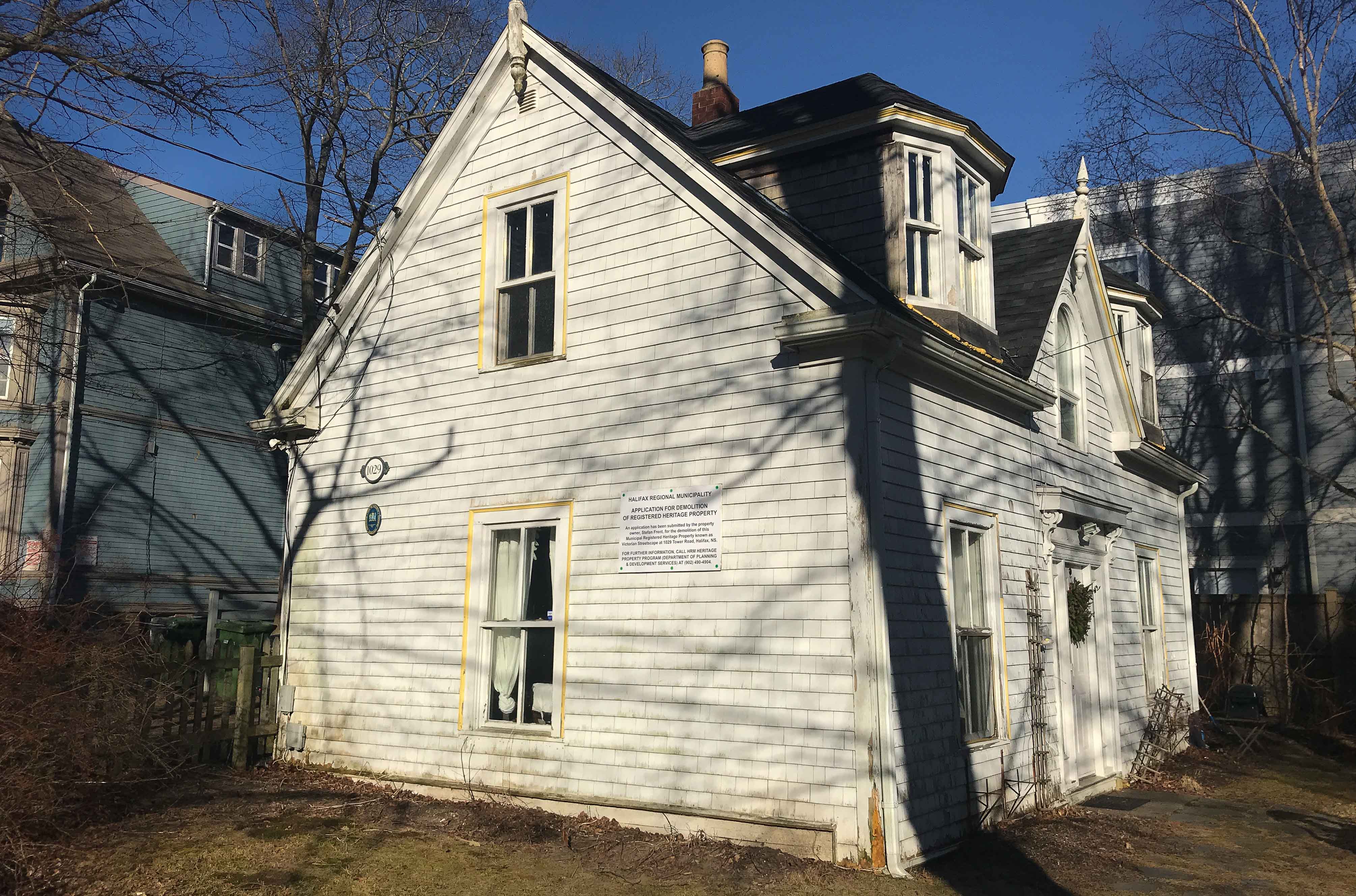heritage
Another heritage home nearing demolition
The owner of 1029 Tower Rd. can demolish the property in February 2020

caption
The house at 1029 Tower Rd. was designated a heritage property in 1992.In a year’s time, another Halifax heritage home may come tumbling down.
The owner of the charming cottage tucked in a corner of 1029 Tower Rd. originally applied to demolish the building in February 2017.
The heritage advisory committee has yet to approve or decline owner Stefan Frent’s request. However, the Heritage Property Act allows the owner of a registered heritage building to demolish a property regardless of approval or not.
After a three-year waiting period, owners of heritage properties have a one-year window to demolish. Frent’s one-year window begins February 2020. He has not responded to a request for comment. Related stories
“It is sort of like the canary in the coal mine in that what’s about to happen to it –– has been happening to too much of our heritage,” says Andrew Murphy, president of the Heritage Trust of Nova Scotia.
In 2018, the National Trust for Canada listed 1029 Tower Rd. as a Top 10 Endangered Place after it was listed for demolition. The property’s situation “illustrates a very common threat to historic places across the country: a combination of development pressure and the limitations of heritage legislations to prevent demolition,” said Katrina Guerin, communications manager for the Trust.
Tower Road is just over one kilometre long, from Victoria General Hospital to Point Pleasant Park. These days, it’s a smattering of older-looking homes juxtaposed with towering, modern apartment buildings. Each building faces west –– except for 1029 Tower Road. A testament to its older days, the three-bedroom house faces south, like a piece of the original quilt surrounded by patchwork built around it.
Halifax regional council voted to register 1029 Tower Rd. as a heritage property in June 1992 –– 175 years after its first occupant moved in. At the time of its registration, it was owned by doctors David and Sonia Murphy, who encouraged the designation.
Heritage moment
Originally known as New Road, Tower Road was built in 1798 under order of Prince Edward, Duke of Kent, to link his newly constructed Martello Tower (in present-day Point Pleasant Park) to the Halifax Citadel.
The Halifax Regional Municipality heritage building registry dates the house’s construction to 1817. The first recorded occupant was Charles Puttner Jr. in 1873.
Puttner Jr. was an apothecarist (pharmacist) at the Victoria General for 53 years, eventually working as head of the X-ray department until 1919.
In the report to council evaluating the heritage value of the property, “the next prominent resident associated” with the building was Dr. James Doull.
Doull has a laundry list of accomplishments: he graduated from Dalhousie University medical school, did his graduate work at Cambridge University and received his doctoral degree in public health from Johns Hopkins University. While serving with Royal Army Medical Corps during the First World War he was awarded the Military Cross and Croix de Guerre. He spent 15 years with Western Reserve University and helped organize the World Health Organization.
He was also chief health officer of Nova Scotia before the Department of Health was created. He died in 1963.
‘Urban fabric’
Twenty-seven years after becoming a heritage property –– a designation meant to offer protection and oversight of heritage properties –– 1029 Tower Rd. could be lost.
“It’s part of the urban fabric of Halifax,” says Murphy. A part “we’re losing so much of these days.”
The house is also one of 14 houses included in the Tower Road Victorian Streetscape by the Canadian Register of Historic Places. Murphy says the trust wants to see more districts preserved, like Tower Road or Schmidtville, because they are the historical aesthetic of the HRM.
He likens it to Paris, which “has a pattern of architecture that knits together to create this lovely experience,” he says. “It has preserved the pattern of development that people find interesting and unique.”
The HRM heritage advisory committee oversees the applications for heritage properties and advises regional council on approving or declining heritage property designations. Murphy says the HRM is quite helpful and pro-heritage, “but they have no power.” The Heritage Property Act is provincial legislation.
“It doesn’t protect the buildings enough,” says Murphy. “It’s Section 18 that allows people to demolish after a three-year waiting period. We’d like to see that removed from the act, and that once something’s protected, it’s protected forever.”
He says other cities can do more to protect heritage properties.
“We tend to demolish quicker and build something new than other cities (like Quebec and Toronto),” says Murphy.
Since 2009, he says, 33 of the 104 potential heritage buildings in the downtown have been demolished.
“So at the rate we’re going, it’ll be all gone in another 20 years –– less than one generation.”

